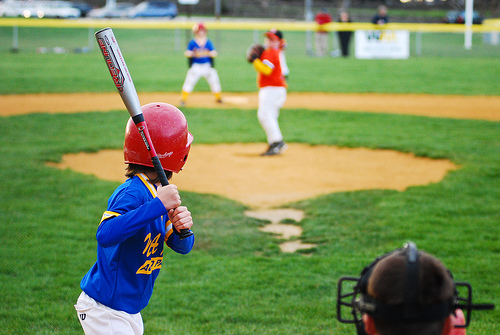Valuable Tips for Every Aspiring Baseball Player

A guest post from friend of the blog David Morgan.
David is the editor/co-founder of www.theplanetofbaseball.com. He’s a software engineer by day and a baseball blogger by night, and has participated in the training activities of a youth baseball team in his hometown. He has passion for baseball and has been a fan his whole life.
Are you among the millions of America’s favorite pastime fans? Baseball is without a doubt a game that evokes immense nostalgia among many. Another factor that makes it favorable is that it can be played by most people in the average weight and height category. If you love the baseball lifestyle, then you will love what this article entails.
Choosing the right baseball bat
A couple of methods have been devised on how to choose the right baseball bat. However, it is always advisable to choose the one that feels most comfortable. Rule of thumb is that you should never go up more than an inch at a time. By adhering to this principle, you will quickly adjust to your new bat without having to make significant changes to your swing. If you are a beginner at baseball or want to resize yourself, below are some helpful tips on how to go about it.
- Hold the bat’s handle with one arm and put it to your side. While in an upright position, see if the bat touches the ground. If yes, then you have the right size.
- Hold the bat in a horizontal position with the handle knob at the center of your chest. Try reaching out your arm, and if you can grasp the barrel of the bat, then it’s the right size.
- For youth baseball bats, ensure that the bat reaches but does not exceed the child’s hip when positioned upright next to your child.
- Weight is also of the essence; children below 60 pounds should not swing a bat that is beyond 29 inches and for those above 70 pounds, their bat length range should be between 28-32 inches.
When it comes to choosing a bat, length and weight are important factors because they cause a distinction in the swing physics in terms of bat speed and force.
Find your batting gloves
For you to become a successful player, having the right batting glove is paramount. Batting gloves are made differently regarding size and material. The perfect glove for you will mainly depend on the position you play but below are some other factors that will help you find the ideal choice.
Before you can purchase a glove, the most crucial thing you have to know is the player’s type of throw. This refers to the hand which the player uses to pitch the ball. This will depend on whether the player is a lefty or righty.
RHT- Right-hand thrower means he/she wears the glove on the left and throws with the right.
LHT- Left-hand thrower means he/she wears the glove on the right and uses their left hand to hurl the ball.
Other factors include
Pocket size – depending on the player’s field position, the pocket size of one glove varies from the other.
Webbing – there are about eight different webbing designs to choose. The webbing type can also be determined by the position of a player.
Wrist adjustments – some gloves are made with wrist adjustments that can allow players to put them on and off with much ease than others.
Material- gloves can be made from leather, mesh, or synthetic materials. Leather, however, is the most preferred due to its durability and comfort.
How to care for your baseball bat
The amount of care you accord to your bat tells a lot about the kind of player you are. A good player will always take the best care of their bat. Below are some baseball bat care tips that will help you keep your bat in the best possible shape.
- If possible, limit the bat to personal use
- Avoid playing in temperatures lower than 60ºF (16ºC)
- Do not store it in extreme temperatures; cold or hot
- Avoid banging the bat against your cleats especially metal ones
- Do not strike any waterlogged balls or dimple balls
- After every swing, rotate your bat ¼ turn to ensure that all sides are used evenly
- Inspect your bat for damages routinely and keep it clean
Via: Flickr.com
Youth baseball may seem like the least dangerous game especially when comparing it to hockey or football. However, the risk of injury is very real and should not be overlooked. From muscle strains, wild pitches, collisions, arm injuries and much more. To avoid the danger, here are some youth baseball safety tips.
Wearing proper gear- a good number of baseball youth leagues will insist on the following safety equipment;
- Batting helmet
- Catcher’s equipment
- Plastic cleats
- Protective cups
Other protective gears such as sliding shorts, batting guards, and mouth guards are good considerations.
Proper warm up- it is standard practice for most sports to indulge in a stretching exercise pre-game. Particular attention should be paid to the throwing arm to protect against muscle injury.
Pitch count- at a young age, excessive pitching can be detrimental. The total number of pitches should be kept at a minimal (less than1000) each season with plenty of rest in between.
Technique- poor pitching mechanics followed by overuse of the arm can be very dangerous to a player.
-David Morgan














